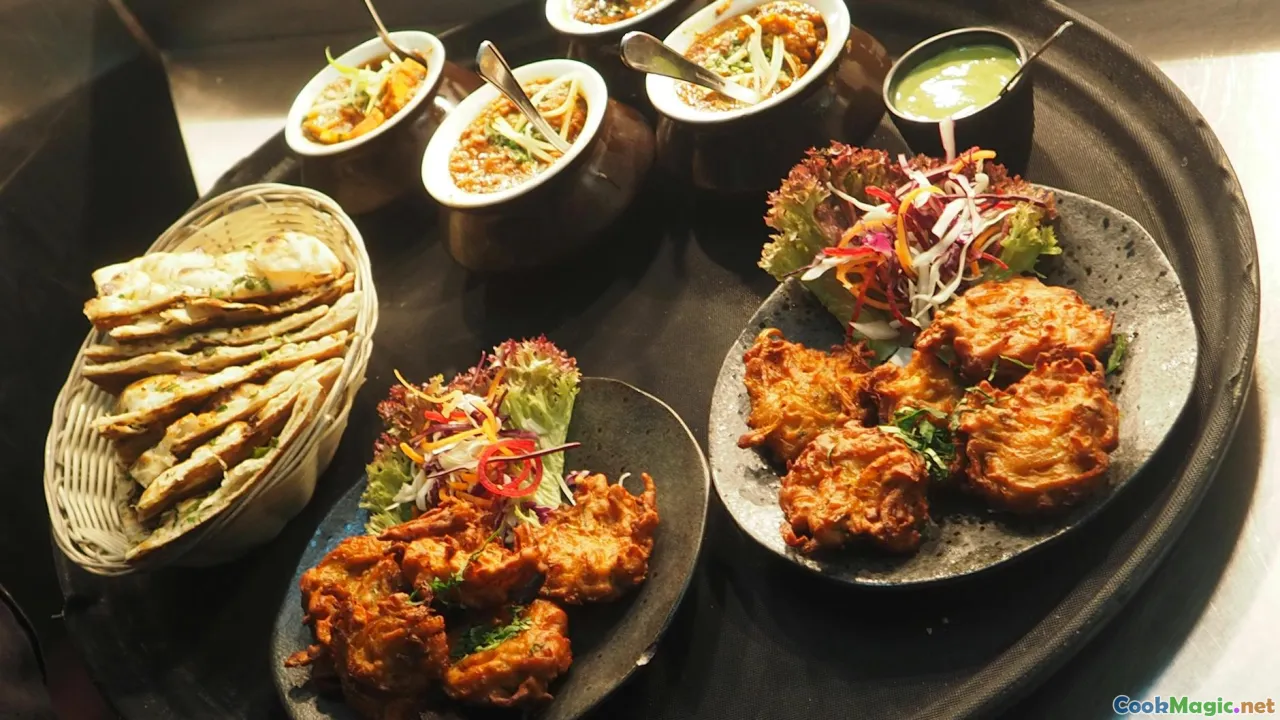Exploring the Spices of Traditional Bangladeshi Cuisine
8 min read Dive into the vibrant world of Bangladeshi spices, uncovering their cultural significance, aromatic profiles, and role in authentic dishes. April 21, 2025 04:55
Exploring the Spices of Traditional Bangladeshi Cuisine
An Invitation to a Flavorful Journey
Imagine walking through bustling markets along the banks of the Padma River, where the air is thick with the intoxicating aroma of spices—cardamom, turmeric, cumin, and a symphony of others. This sensory overload is not merely a feast for the senses but a reflection of Bangladesh's rich culinary heritage. It’s a land where spices are not just ingredients; they are stories, history, and emotion encapsulated in tiny, potent grains and powders.
Bangladeshi cuisine is renowned for its bold flavors, vibrant colors, and intricate balance of tastes. At the heart of this culinary magic lies a carefully curated palette of spices that have been passed down through generations, each with its own story and significance. In this article, we embark on an immersive exploration of these spices—unveiling their cultural roots, their aromatic allure, and their vital role in creating the unforgettable flavors of Bangladesh.
The Cultural and Historical Tapestry of Bangladeshi Spices
A Legacy Carved in Spice Trade
Historically, Bangladesh's strategic position along ancient trade routes made it a melting pot of spices from India, Persia, Arabia, and Southeast Asia. The Mughal Empire further enriched this tapestry, introducing luxurious spice blends into royal kitchens. Spices like saffron, cinnamon, and cloves found their way into the heart of Bengali cooking, symbolizing prosperity and tradition.
Spices as Symbols of Identity
For Bangladeshis, spices transcend mere flavoring—they embody cultural identity, familial bonds, and regional pride. Each district boasts its own unique spice blends, reflecting local tastes, climate, and agricultural practices. For example, the aromatic panch phoron (five-spice blend) is a quintessential Bengali mix, combining cumin, fennel, mustard seeds, fenugreek, and nigella, embodying the harmony of diverse flavors.
The Aromatic Spectrum of Bangladeshi Spices
The Pillars of Flavor
1. Turmeric (Holud)
Bright yellow, earthy, and slightly bitter, turmeric is the cornerstone of Bengali curries. Beyond its culinary use, it’s revered for its medicinal properties and auspicious symbolism, often used in rituals and celebrations.
2. Cumin (Jeera)
With its warm, nutty aroma, cumin adds depth to lentil dishes, rice, and meat curries. When roasted and ground, it releases a smoky fragrance that awakens the senses.
3. Coriander (Dhania)
Sweet, citrusy, and slightly spicy, coriander seeds provide a fresh, herbal note. Ground coriander is essential in spice mixes like panch phoron and various masalas.
4. Mustard Seeds (Shorshe)
Pungent and sharp, mustard seeds are integral to Bangladeshi cooking. They are used whole in pickles or tempered in oil to release a fiery aroma, forming the base of many traditional dishes.
5. Cardamom (Elachi)
Sweet and floral, cardamom elevates rice puddings, sweets, and stews, imparting a fragrant, almost ethereal quality.
The Exotic and Lesser-Known Spices
1. Fenugreek (Methi)
Bitter yet aromatic, fenugreek seeds are often used in small quantities to add complexity and aroma.
2. Cloves and Cinnamon
These warm, sweet spices are used sparingly but effectively, especially in festive dishes and sweet treats.
3. Saffron (Kesar)
Though expensive, saffron’s subtle floral notes lend a regal touch to special dishes like FirniandKesar Malai Pulao.
From Grain to Plate: The Role of Spices in Everyday Cooking
The Art of Tempering (Tadka)
A hallmark of Bengali cooking involves tempering spices in hot oil—a process called tadka—which unlocks their full aroma. Whole mustard seeds crackle fiercely, releasing their pungent fumes, while cumin and dried chilies add a smoky depth.
Spice Blends and Marinations
The iconic panch phoron is used to season vegetables, lentils, and fish, offering a balanced burst of flavors—spicy, sweet, and earthy. Fish, a staple in Bangladesh, is often marinated with turmeric, mustard, and chili, then cooked until tender, fragrant, and bursting with flavor.
The Dance of Flavors in Rice and Lentils
Bangladeshi meals revolve around rice and lentils, where spices elevate humble ingredients. The lentil dish Dalis seasoned with cumin, turmeric, and a hint of garlic, whileBasmati rice is often flavored with a cinnamon stick and cardamom pods during cooking.
Personal Reflections and Culinary Memories
Growing up in Bangladesh, I remember the aroma of my mother's kitchen—spices sizzling in mustard oil, filling the entire house with warmth and anticipation. The way she balanced spices—never overpowering, always harmonious—taught me that spices are like stories, each adding depth and character.
One of my favorite memories is sharing a steaming bowl of Begun Bharta (mashed eggplant) seasoned with mustard seeds and turmeric, accompanied by freshly cooked rice. The simple act of combining these flavors created a sensory symphony that encapsulated the essence of Bangladeshi comfort food.
Final Thoughts: Embracing the Spice Heritage
Exploring the spices of traditional Bangladeshi cuisine is more than an academic exercise—it's a journey into a culture that values harmony, history, and the art of flavor. Whether you're a home cook or a culinary explorer, understanding these spices opens the door to recreating authentic tastes or inventing new culinary stories.
Next time you simmer a pot of lentils or fry some fish, remember that you’re participating in a centuries-old tradition—where every spice is a chapter, and every dish a celebration of Bangladesh’s rich, aromatic heritage.
Happy cooking, and may your kitchen always be filled with the vibrant scents of Bangladeshi spices!









